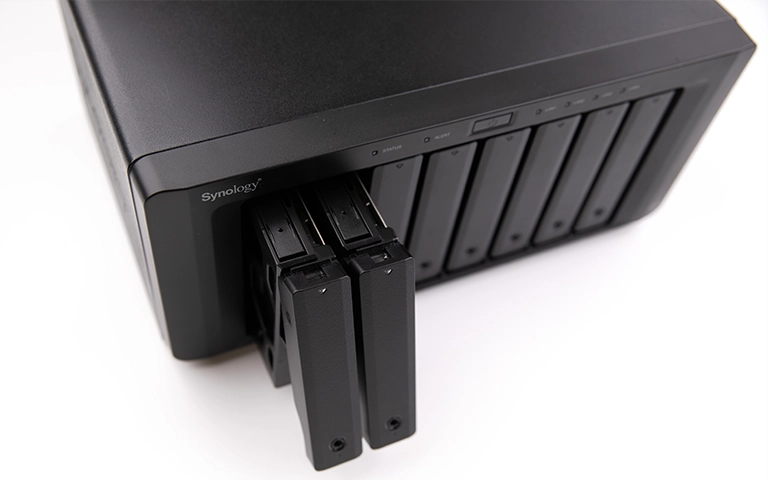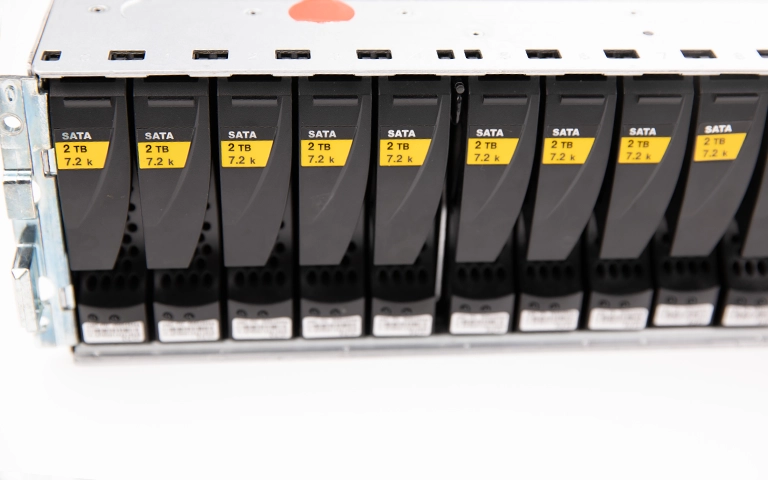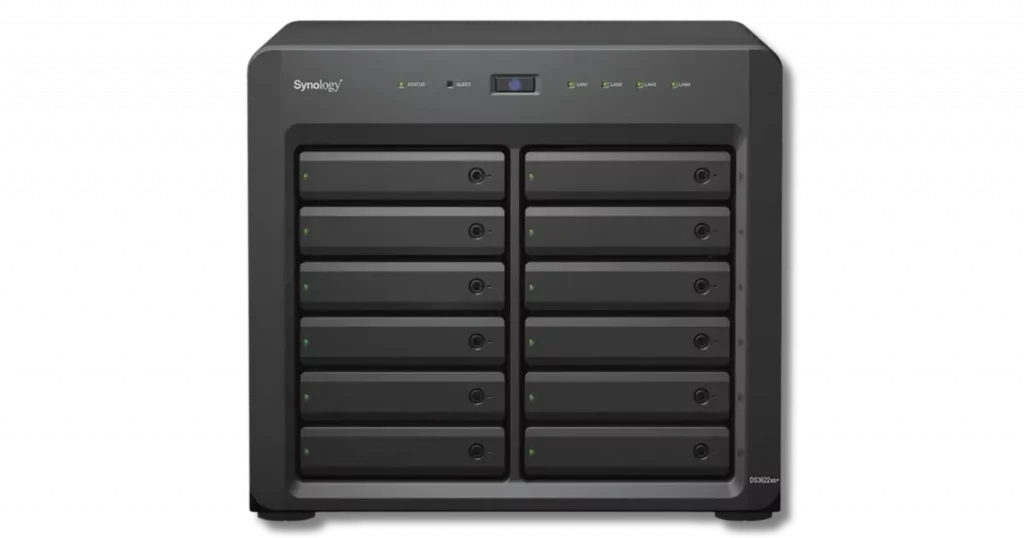When critical data is stored on a NAS, the last thing any user wants is unexpected data loss. Whether you use SHR (Synology Hybrid RAID) or traditional RAID configurations, knowing how each storage setup impacts data recovery is essential.
At RAID Recovery Services, we specialize in restoring files from failed Synology NAS devices, RAID arrays, and hybrid storage systems.
In this guide, we compare SHR and RAID from a recovery-focused viewpoint to help you choose the safest option for your storage environment.

What is SHR? Understanding Synology Hybrid RAID in Data Recovery
SHR is Synology’s proprietary RAID-like technology designed for non-technical users. It automatically configures redundancy and supports drives of mixed sizes, offering flexibility and ease of expansion.
However, from a data recovery standpoint, SHR has limitations:
Custom metadata structures make manual recovery more complex
Mixed drive sizes complicate block mapping and parity reconstruction
SHR-2 configurations allow for 2-drive fault tolerance but are even harder to reverse-engineer in a lab
When SHR arrays fail, traditional RAID tools don’t work. Specialized equipment and expertise are required to reconstruct the storage structure and extract data.
What is RAID? Why It’s More Recovery-Friendly
Traditional RAID configurations like RAID 0, 1, 5, 6, or 10 follow standardized algorithms for storing data and parity. They’re used across enterprise NAS setups, servers, and storage systems.
In data recovery:
RAID 1, 5, and 6 offer strong redundancy
Structures are well-documented and predictable
Recovery labs can emulate RAID configurations if metadata is lost
Tools exist to handle disk image reconstruction and parity repair
RAID is typically easier to recover than SHR, especially in environments with identical drives and clear RAID controller logs.

SHR vs RAID: Which Is Easier to Recover?
NAS Failure Scenarios We Commonly Recover
We frequently receive cases involving:
Synology NAS devices that refuse to mount after drive failures
Users who accidentally removed a drive during rebuilds
Firmware or DSM updates that corrupt SHR metadata
Multiple drive failures in SHR-2 or RAID 5 configurations
These events require a cleanroom environment, binary-level disk imaging, and custom software to recover structured file systems and RAID logic.
Learn more about how we handle these scenarios on our NAS data recovery service page.
Case Study: SHR-2 Recovery From a Failed 5-Bay Synology NAS
A client brought us a Synology DS3622xs+ with 5 drives (a mix of 4TB and 6TB), running SHR-2. After a power outage, the NAS wouldn’t boot, and DSM reported a volume error. The client’s IT team attempted a rebuild, which failed.
Key challenges:
Two drives had bad sectors
DSM update had partially overwritten SHR metadata
Drives used different sizes, complicating data order
Our engineers performed full forensic imaging, rebuilt the parity layers, and successfully recovered 95% of critical business data, including DICOM files and virtual machines.
If you’d like to read the full breakdown of this case, see our detailed Synology DS3622xs+ recovery case study.

Fast turnaround times for business-critical data
Which Setup Should You Choose for Data Protection?
For non-technical users or small businesses:
SHR offers convenience and flexibility
Better for budget-friendly upgrades or mixed-drive use
Higher complexity if recovery is needed
For enterprises or critical systems:
RAID 5 or 6 provides better transparency and predictability
Easier to simulate and recover after failure
Supported by most enterprise-grade NAS and recovery tools
If fast and guaranteed recovery is your priority, traditional RAID is the safer choice.
Can You Recover Data From Failed SHR or RAID Arrays?
Yes. RAID Recovery Services offers specialized support for:
Synology SHR and SHR-2 systems
RAID 0/1/5/6/10 arrays in QNAP, Dell, HP, and more
Drives with firmware corruption, rebuild errors, or mechanical failures
Systems that won’t boot or report corrupted volumes
Our cleanroom engineers use advanced RAID reconstruction techniques and proprietary SHR recovery software to restore your lost files.

Need Help With NAS Data Recovery?
If your Synology NAS or RAID server has failed, we can help. Contact RAID Recovery Services today to speak with an expert. We offer:
Free diagnostics
Safe and secure recovery environment
Emergency 24/7 support
Cleanroom and forensic recovery solutions
Trust the experts with proven results
Frequently Asked Questions
Can I recover data from a failed SHR NAS?
Yes, but recovery requires expertise with Synology’s proprietary structure.
Is SHR better than RAID for data recovery?
No. RAID follows standardized patterns that are easier to reverse and restore.
How many drives can SHR-2 lose before data is unrecoverable?
SHR-2 can tolerate 2 drive failures. Beyond that, full recovery is uncertain.
What should I do if my NAS fails?
Power off the NAS immediately. Do not attempt a rebuild. Contact a professional recovery service to avoid overwriting data.